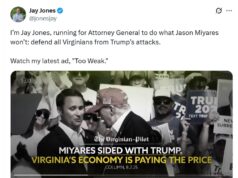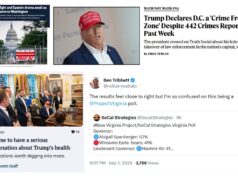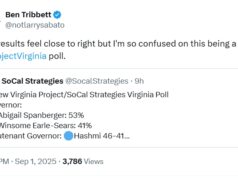I spent the night in Harlem, with Willie Blackmon, a young man I had met while we both protested at the White Castle on Boston Post Road in the Bronx, because the chain would not hire blacks. I was 17, newly out of high school, about to head off to Haverford College in a few weeks.
Before we headed up to Willie’s apartment, we wandered around Greenwich Village. We listened to speeches, heard musicians, talked with other people, most of whom would not be heading to Washington the next morning.
I had trouble sleeping. I was excited, eager with anticipation.
Shortly after 5 we got on the bus. Some of the people were those we knew from the protests, others were activists in the Bronx chapter of the Congress of Racial Equality, then headed nationally by James Farmer of Marshall Texas (also the home town of Bill Moyer, something I would not know until years later), knowing he would not be there because he refused to be bailed out from his incarceration in Placquemines Parish Louisiana.
Some, including me had guitars. We sang, we dozed, we nibbled, we chatted, as the hours passed on our journey southward.
By the time we got off the Baltimore-Washington Parkway onto New York Avenue, we were surrounded by buses. I quickly realized I had never seen so many buses at one time, not even at the huge Port Authority Bus Terminal in Manhattan. People wave at those in other buses, our speed dropped as the mass of metal vehicles came together and headed to the National Mall.
I have many memories of that day. I ran into a girl who had lived across the street from me, but moved away about 8 years earlier. It was only the 2nd time we had seen one another since – I had once been invited to a dance at the school she attended, a block from her new home. While sitting on the ground chatting with her and strumming my guitar I heard nervous applause, turned around and saw walking past me more than 7 feet of Wilt Chamberlain, who did not march in the front row with the other famous folk, but came as a private individual.
I ran into young black men from Mississippi who had never heard of any civil rights organization except the NAACP. They wore coveralls, just as they did working in the fields, or when they had gone to school. They had been traveling for several days, not always able to find places to eat or go to the bathroom. We swapped pins of the organizations with which we had come.
I remember the music, and some of the speeches. But that made less impression on me than did the people.
I had never seen so many people. I remember watching as the groups went by, and more groups, and still more groups. The one I remember most clearly had their banners, and chanted their chants – it was the UAW, from Detroit, with a racially mixed group.
I first experienced the meaning of segregation in December of 1956 when our family got off a plane in Miami to commence our winter vacation, and I saw the signs for segregated bathrooms. I did not understand, so my mother explained. I had no memories of the Montgomery Bus Boycott, nor had I by that point paid attention as I read the various newspapers coming through our house about the other events of the early days of the Civil Rights Movement. Thus I was even as I left for DC in 1963 unaware that it was an anniversary – on August 28 1955 Emmett Till was kidnapped for having had the audacity as a young black man for whistling at a white woman. His body would not be discovered for several days.
In 1956 I had not until Miami had a real awareness of race. Our community had four elementary schools. The one I attended was one of two that were all white, because of the housing patterns in our community. I would not attend school with blacks until I skipped into 7th grade in October of 1957. The only blacks I knew in December of 1956 were the maid who cleaned our house and cooked dinner during the week – by then my mother had gone back to practicing law – and Jesse, the 20ish guy who drove the delivery van for our local Grand Union, itself a tiny place the size of a small 7-11 today.
Yet once one’s eyes are open it is hard for them to close, even metaphorically. The year I would skip I saw Little Rock as a part of my television experience. I saw the faces of hatred. I began to seek out information about segregation and discrimination. I had used the N-word occasionally, but now I stopped – even at my tender age I realize that for me to use it was to associate myself with those acting and shouting out of hatred that I saw on my television. I realized I was insulting the two kind black adults that I did know. My mother explained that there were equivalent words that might be directed at me – Kike, Hebe – or even more hateful and dangerous expressions – Christ-Killer. I learned about the history of anti-semitism, and felt somehow connected with those I saw experiencing racism. Some of my elderly great-aunts, of a family most of whose members had been born in Bialystok, some in the previous century, had picked up racist attitudes. But their experience of America was limited, and they were not really hateful people. One was mildly retarded, the other had her own horrors to live through – she was less than 4 feet tall, and the family story is that she was the result of a botched abortion, which is perhaps why she was quick to react as if people did not want her around.
My days in secondary school coincided with much of the Civil Rights Movement. It was an unavoidable part of what we would encounter when watching or reading about the news. I became friends with several black classmates – Nancy Goode who played violin in the orchestra, later in high school with Sammy Shelton, who captained the cross-country team which was the source of my athletic letters. We were friends, but only at school. We did not attend the same parties, nor visit one another’s houses. My social relations would not extend that far until I entered college, and even then having Blacks as a regular part of my social circle was a phenomenon that would really get underway only after I dropped out of college and enlisted in the Marines – there the only color that mattered was that of the uniform we all wore.
August 28, 1963. It began shortly after 5 AM. It would not end until the wee hours of the next morning, when I finally was able to catch a train from Grand Central to Larchmont where I lived.
I was already embarked on a path in life that would require me to speak up for those denied rights – the many evenings protesting at the White Castle. I had also already sat in at the Manhattan offices used by Governor Nelson Rockefellar. In college I would participate in more protest, first about civil rights, later about Vietnam (even though I would enlist because I believed in service).
I was one of perhaps a quarter million who came to the Mall. I was a person of no particular significance or importance. Perhaps 20-25% of those attending were white – on our bus if I remember correctly out of around 40 only 6 of us were not Black, and that includes the one gentleman of Chinese background. I was merely an about to be college student, 17 years old. That is why it was significant – I had committed myself, at least for that day, to something much larger than myself. I was learning that to commit on behalf of the rights of others was to expand my heart and my soul.
I live only a few miles from the Lincoln Memorial. I often take visitors there, almost always in the evening. I love to drive around past the government buildings and memorials at night. I will perhaps park on Constitution, and we will walk to the Vietnam wall, which I think is best experienced when the sky is dark, with or without moonlight. There are fewer crowds, it is easier to reflect, to touch the names. Then we will walk to the Greek temple that serves as the memorial to our martyred 16th President. Someplace not too far from where I sit I have a recording of Marian Anderson singing there after she had been denied the right to perform in what was then DC’s only concert venue, Constitution Hall, because she was black. In 1963 I heard blacks and whites singing from those steps. At night to enter the temple, stand before the magnificent Daniel French statue of my favorite president, and read the words carved in the wall of his speeches is incredibly moving. As I think of the occasion of his death, at the end of a war that ended slavery in this nation, killed by a Southerner, I cannot help but connect it to the first time I saw the building, albeit only from the outside, perhaps 100 yards away while in the midst of a huge mass of people attempting to peaceably accomplish what the war had only begun, a healing of the racial divide of the nation, an opening of equal economic as well as social justice for millions of our fellow Americans denied what was my right because of the color of my skin.
I will not watch the events today. I will not go near the Mall, nor will I give any attention to news coverage. Not today. I have other tasks that will occupy most of my waking hours. Further, I refuse to debase my memories of a seeking of something greater than myself in my participation in 1963. Perhaps some who attend today will do so out of motivations other than fear or the seeking of political and personal power and gain. Perhaps some will not seek advantage at the expense of others. Perhaps there will be a few who will not be motivated by fear and hatred and some perverted sense of superiority. I want to believe that.
I wanted to believe in 1963 that we were moving inexorably to heal the nation. I wanted to be hopeful, with the hope and idealism of youth.
To heal a nation – that is the title Jan Scruggs used for the book in which he described his efforts to build the Vietnam wall. That was what we sought on this date in August 1963. We were motivated by hope, idealism, even love. That is what I prefer to associate with this date, with the venue of the Memorial from inside which Lincoln gazes towards the monument to our First president, towards the National Capitol.
I prefer words of hope, like those of Lincoln: “With malice towards none, with charity for all. . . .” It is expressions like that which I want associated with that place, especially on this anniversary. I also remember words from a few months earlier, on the occasion of the dedication of a different kind of memorial in Pennsylvania. They were words of caution, even as they expressed a great hope:
m these honored dead we take increased devotion to that cause for which they gave the last full measure of devotion-that we here highly resolve that these dead shall not have died in vain-that this nation, under God, shall have a new birth of freedom- and that government of the people, by the people, for the people, shall not perish from the earth.
government of the people, by the people, for the people. . . For all the people, not dividing us by religion, or race, or political affiliation.
47 years ago I came to Washington as a not quite adult, a part of a large group who came to bring the nation together, to heal wounds that still festered, to overcome hatred and division. It is a still unfinished task. I will not walk away from that hope and those dreams.
I will not let others pervert the meaning of that day, the meaning of the Civil Rights Movement, which sought to overcome what Langston Hughes called the dream deferred.
I came out of hope. 47 years later perhaps my hopes have been battered. At a time when this nation is still in economic peril – at least for many people that is their current situation – I worry about that less than I do our moral peril, the possible loss of dreams and of hope that we can heal. I worry that our political trends may see our government of, by and for ALL the people is disappearing even as I write these words.
I came to Washington as one of a quarter million, at a time when progress in civil and economic rights was far from assured, when there was still hatred, when some warned our coming to the city would surely lead to violence. There was no violence. There was no hatred in the words spoken and sung from the podium.
I remember what was. I remain committed to that vision that brought me to Washington for the first time.
47 years ago today.
A step along a personal journey that is still ongoing.
An attempt to find in myself, and help build in my community, my nation, and the world, something of paramount importance if one truly understands the word:
Peace.














